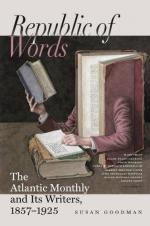In thirty-seven years, from 1434 to 1471, he and his successors expended eight millions of francs (663,755 gold florins) in buildings and charities,—a sum which may be represented by as many, or, as some would reckon, twice as many, dollars at the present day. Nevertheless, the income of Cosmo was never more than 600,000 francs, (50,000 gold florins,) while his fortune was never thought to exceed three millions of francs, or six hundred thousand dollars. Being invested in commerce, his property yielded, and ought to have yielded, an income of twenty per cent. Nevertheless, an inventory made in 1469 showed, that, after twenty-nine years, he left to his son Pietro a fortune but just about equal in amount to that which he had himself received from his father.
With six hundred thousand dollars for his whole capital, then, Cosmo was able to play his magnificent part in the world’s history; while the Duke of Milan, son of the peasant Sforza, sometimes expended more than that sum in a single year. So much difference was there between the position and requirements of an educated and opulent first-citizen, and a low-born military parvenu, whom, however, Cosmo was most earnest to encourage and to strengthen in his designs against the liberties of Lombardy.
This Riccardi palace, as Cosmo observed after his poor son Peter had become bed-ridden with the gout, was a marvellously large mansion for so small a family as one old man and one cripple. It is chiefly interesting, now, for the frescos with which Benozzo Gozzoli has adorned the chapel. The same cause which has preserved these beautiful paintings so fresh, four centuries long, has unfortunately always prevented their being seen to any advantage. The absence of light, which has kept the colors from fading, is most provoking, when one wishes to admire the works of a great master, whose productions are so rare.
Gozzoli, who lived and worked through the middle of the fifteenth century, is chiefly known by his large and graceful compositions in the Pisan Campo Santo. These masterpieces are fast crumbling into mildewed rubbish. He had as much vigor and audacity as Ghirlandaio, with more grace and freshness of invention. He has, however, nothing of his dramatic power. His genius is rather idyllic and romantic. Although some of the figures in these Medici palace frescos are thought to be family portraits, still they hardly seem very lifelike. The subjects selected are a Nativity, and an Adoration of the Magi. In the neighborhood of the window is a choir of angels singing Hosanna, full of freshness and vernal grace. The long procession of kings riding to pay their homage, “with tedious pomp and rich retinue long,” has given the artist an opportunity of exhibiting more power in perspective and fore-shortening than one could expect at that epoch. There are mules and horses, caparisoned and bedizened; some led by grinning blackamoors, others ridden by showy kings,




